3 Clever Ways Recruiters Can Mine LinkedIn's Data for Better Hiring Insights

LinkedIn is the largest professional database in the world. But as the world’s largest professional database, LinkedIn doesn’t just house an almost infinite list of candidates, it also houses vast amounts of data on these people including where they live and work, the companies they work for, the companies they used to work for, the industries they typically tag themselves in, and the skills those within a certain industry typically list themselves as possessing. In other words, highly valuable insights we can use when it comes to trying to find the best candidate for the job.
In this blog, we’re going to show you how to use LinkedIn’s data to gain invaluable insights that will improve your hiring process and enable you to act as more of a consultant with your Hiring Manager. Sound good? Great! Let’s get stuck in.
1. Who are the top employers of the skills my client/organisation is looking the find?
This is a really important thing to understand. Sure, you can go and source candidates from anywhere, but wouldn’t it make more sense to identify where the talent that you’re looking to hire typically go for work i.e. who employs the most people with the particular skill set you’re looking for? Of course it does! Having a good understanding of this is important for two reasons:
- If the employers you identify have a big team of people with those skills, there’s a higher chance of you being able to poach out their talent.
- It’s interesting to note why people with those particular skills are attracted to those organisations.
For example, lets identify the top employers of people with a pre-sales background and RFP experience. After we’ve built out a Boolean search string using the Universal Search Method (seen below), we paste it into the Keywords field of LinkedIn Advanced Search function.
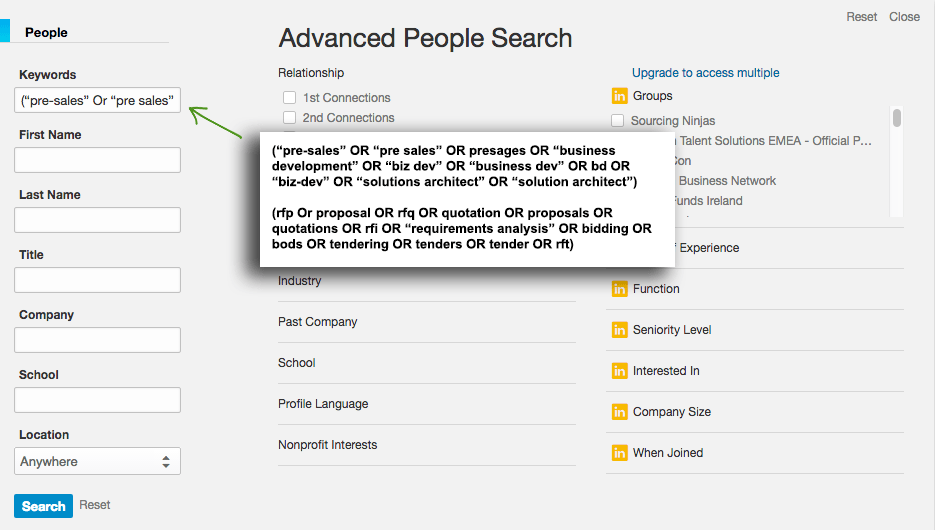
When we click ‘Search’ we can see that there are over one million people on LinkedIn who match our search criteria, but we’re actually not interested in the people. We’re interested in the information contained within the Current Company field on the left hand side of search results page. Here we can see the top 5 employers of people with a pre-sales background and RFP experience in the world. In this example, they are IBM, Tata Consultancy Services, Cognizant, Oracle and Microsoft.
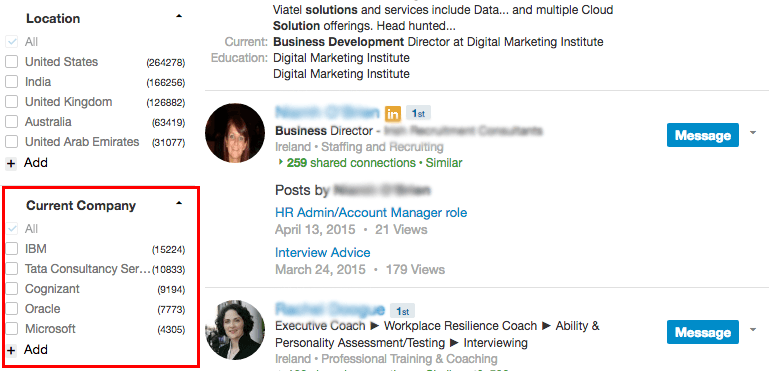
To find out who the top 5 employers are more locally to you (or more relevant to the location you’re recruiting within), all you need to do is click the ‘+Add‘ button in the Location field just above the Current Company field and type in the country/city you require. In this example, we’ll use Sweden.
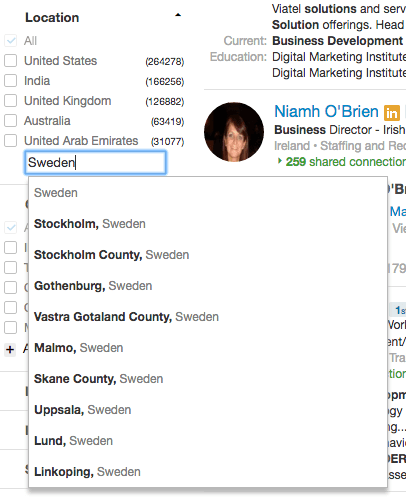
When I re-run my search, I can now see that the top 5 employers of people with a pre-sales background and RFP experience in Sweden are Ericsson, Tieto, Capgemini, IBM and H&M.
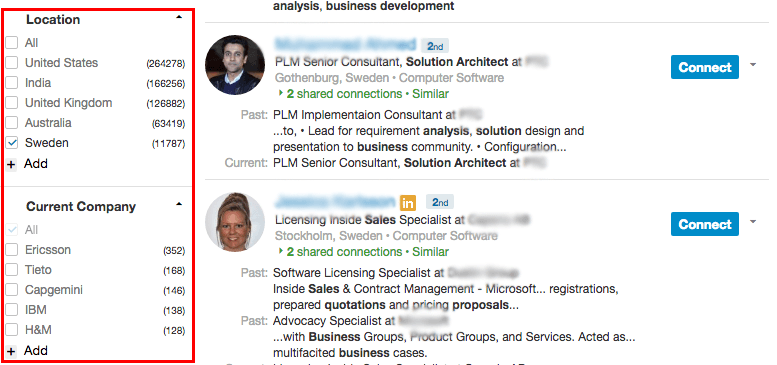
Armed with this knowledge, I can now better inform my Hiring Manager as to where we should might target to find people with these skills. I can also use this information to build an attractive proposition to help entice them to move from their current employer and come and work for my client/organisation.
2. Where do we hire most of our talent from?
This is a great question you may or may not have asked yourself in the past. Where has the organisation you’re hiring on behalf of, found their best talent in the past? You might have anecdotal evidence or a gut feeling about this, but wouldn’t it be better to actually research it and discover tangible insights? You bet it would! It’s important to understand where the organisation has hired from in the past to fill certain roles, as it gives us great insight into what’s worked in the past. It also gives us a great place to start from when it comes to trying to find similar talent in the future.
As an example, lets find out where Accenture has hired the majority of their pre-sales consultants from in the past. After we’ve built out a Boolean search string using the Universal Search Method (seen below), we paste it into the Title field of LinkedIn Advanced Search function.
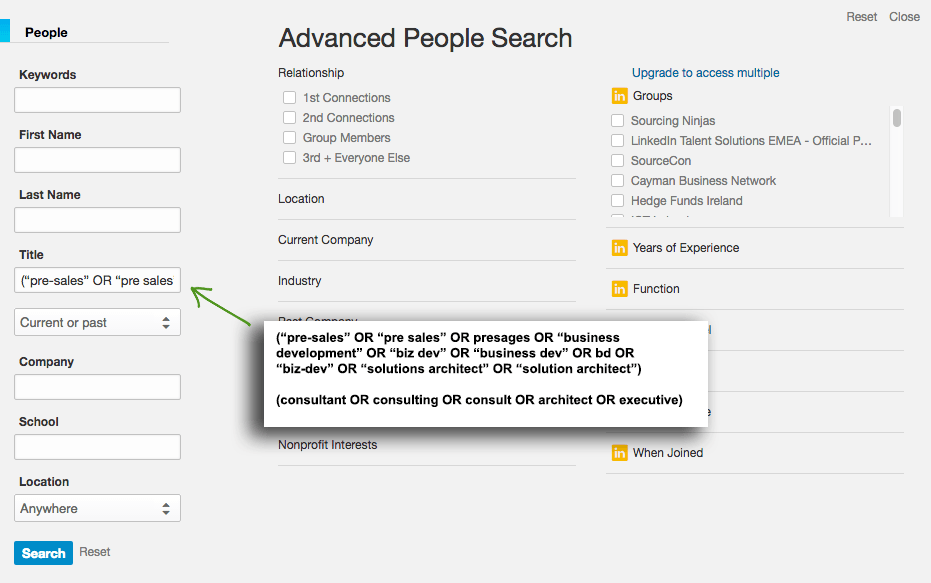
Then, under the Current Company heading in LinkedIn Advanced Search function, click the ‘+Add‘ button and type in the name of the organisation you’re recruiting on behalf of. In this example, we’ve used Accenture.
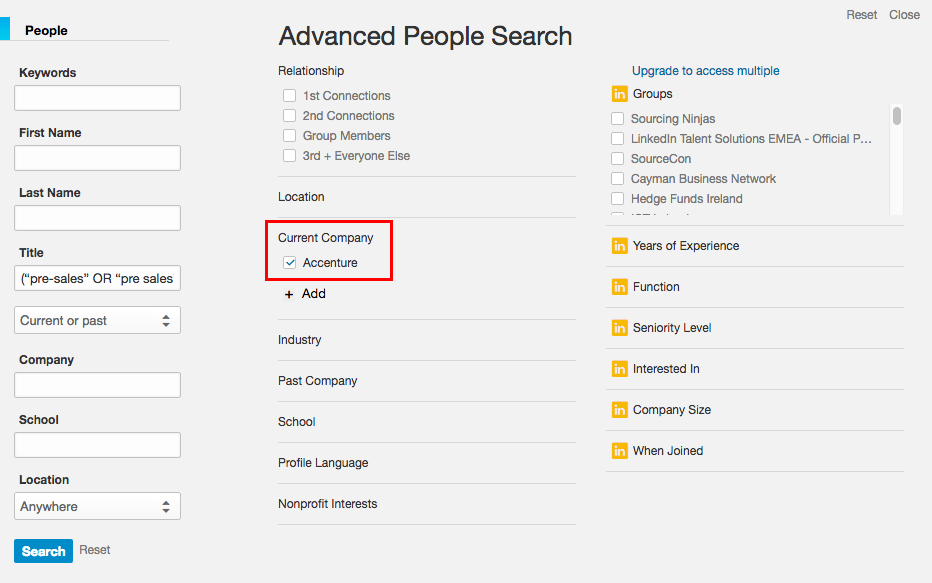
When you run your search, focus your attention on the results listed in the Past Company field on the left hand side of search results page. Here I can see that the top 5 previous employers of pre-sales consultants in Accenture are Accenture (employees of have moved internally), IBM, Hewlett-Packard, Tata Consultancy Services, and Wipro.

Armed with this information, I can now work closely with my Hiring Manager to determine where we might target in the future.
3. Where do we lose top talent to?
Ever wondered where your best talent goes after they’ve waved goodbye to your organisation? Well, wonder no more! Using the same techniques as above, we are also able to determine where our past employees went once they left our organisation. This is extremely important to get to grips with as a recruiter. The companies included in this list have attracted talent away from our organisation. Once we identify them we will be able to research what it is about these companies that appeals to our employees, and formulate a plan for how we can change our employee value proposition (EVP) to better pitch ourselves against these companies when trying to attract new talent in future.
As an example, lets find out where Accenture’s pre-sales consultants went once they left Accenture. After we’ve built out a Boolean search string using the Universal Search Method (seen below), we paste it into the Title field of LinkedIn Advanced Search function, ensuring we’ve selected the ‘Current’ title option.
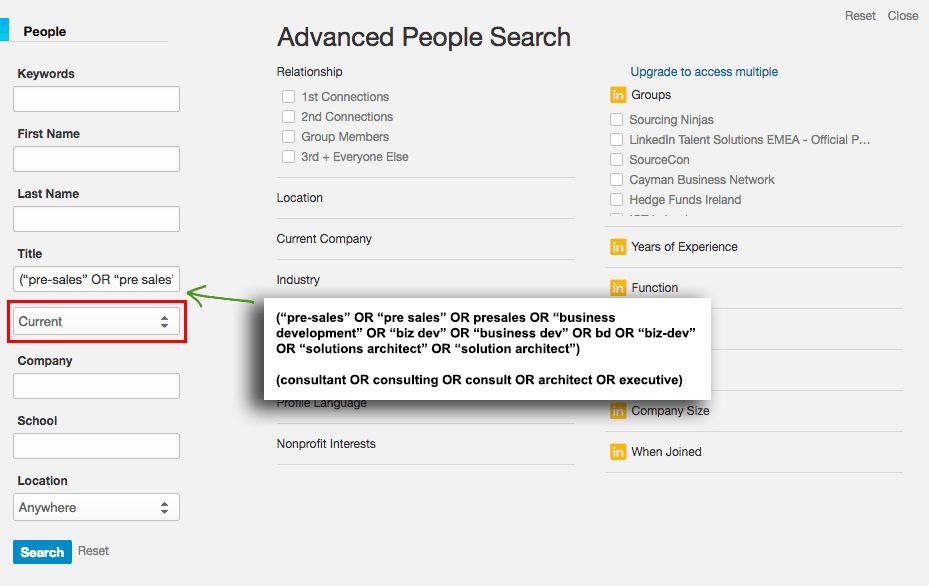
Then, under the Past Company heading click the ‘+Add‘ button and type in the name of the organisation you’re recruiting on behalf of. In this example, we’ve used Accenture.
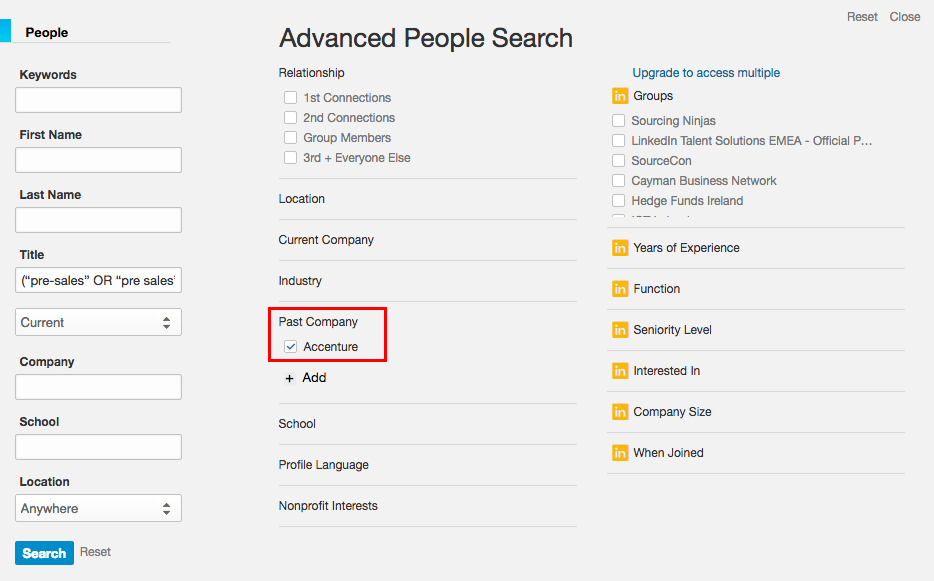
When you run your search, focus your attention on the results listed in the Current Company field on the left hand side of search results page. Here I can see that the top 5 current employers of previous Accenture pre-sales consultants are Accenture (employees who have been promoted internally), Ericsson, IBM, Capgemini, and Hewlett-Packard.

Armed with this information, I can now take a closer look at elements of my job offering like salary, perks, and progression opportunities, to see if they align with my client’s/organisation’s competitors. I can also work with my Hiring Manager to devise a unique, relevant and compelling EVP that proves to potential candidates that my client’s/organisation’s total work experience is superior to that of other organisations.
So there you have it, 3 clever ways you can use LinkedIn’s enormous store of big data to better inform your own hiring efforts. As always, we’re keen to know how you get on when it comes to putting these techniques into practice as part of your own recruiting process, so do give us a shout on Twitter (@SocialTalent) or on LinkedIn. Or if you have any other ways that you use LinkedIn’s big data to your own advantage and you’d like to share them with us, we’d be delighted to see them!
Interested in learning even more clever LinkedIn hacks? Our Black Belt in Internet Recruitment online training platform is packed full of practical, insightful and downright handy LinkedIn tips, techniques, hacks and more to help you get the most out of every recruiters favourite professional network. Request a demo today!
